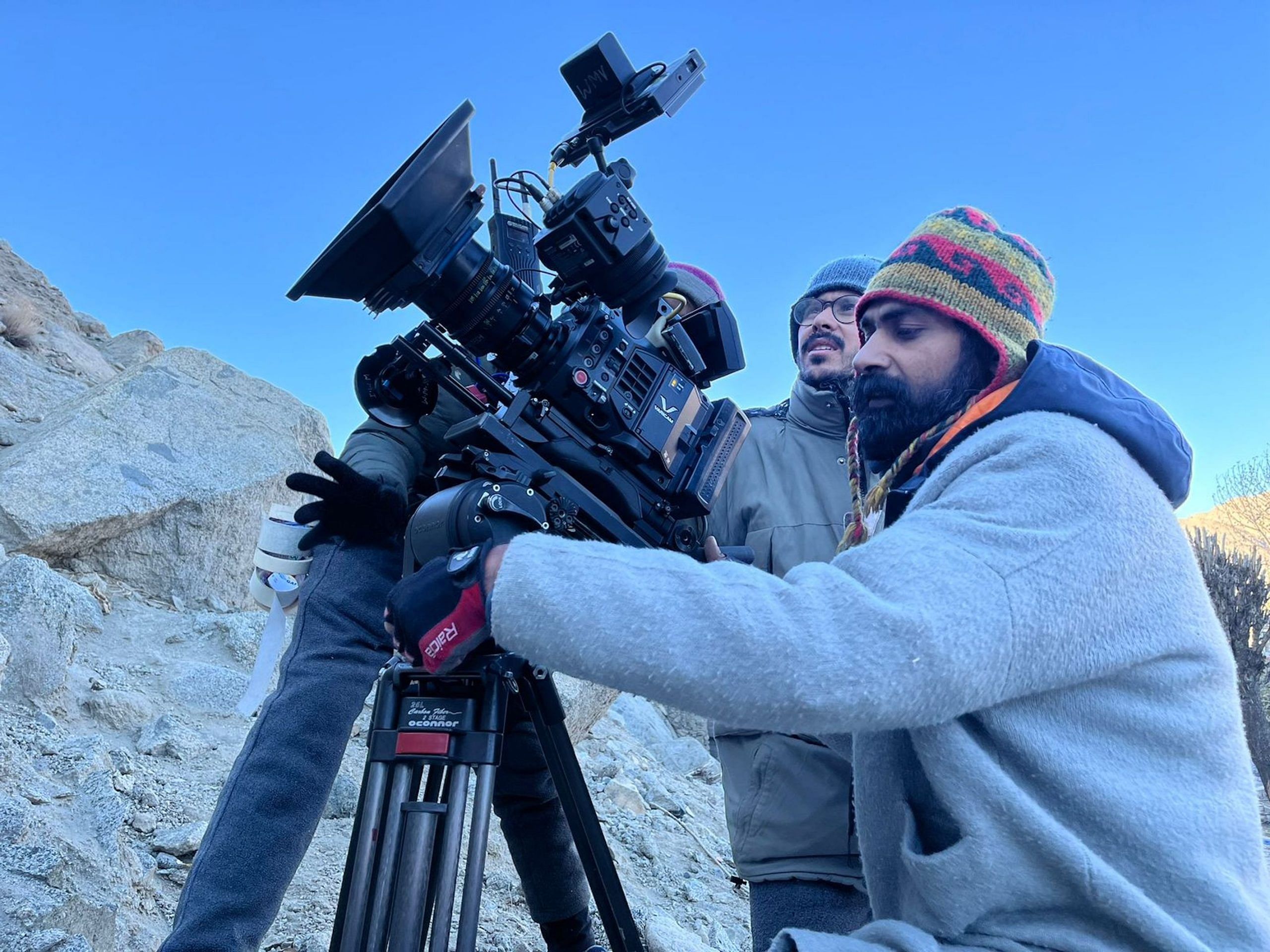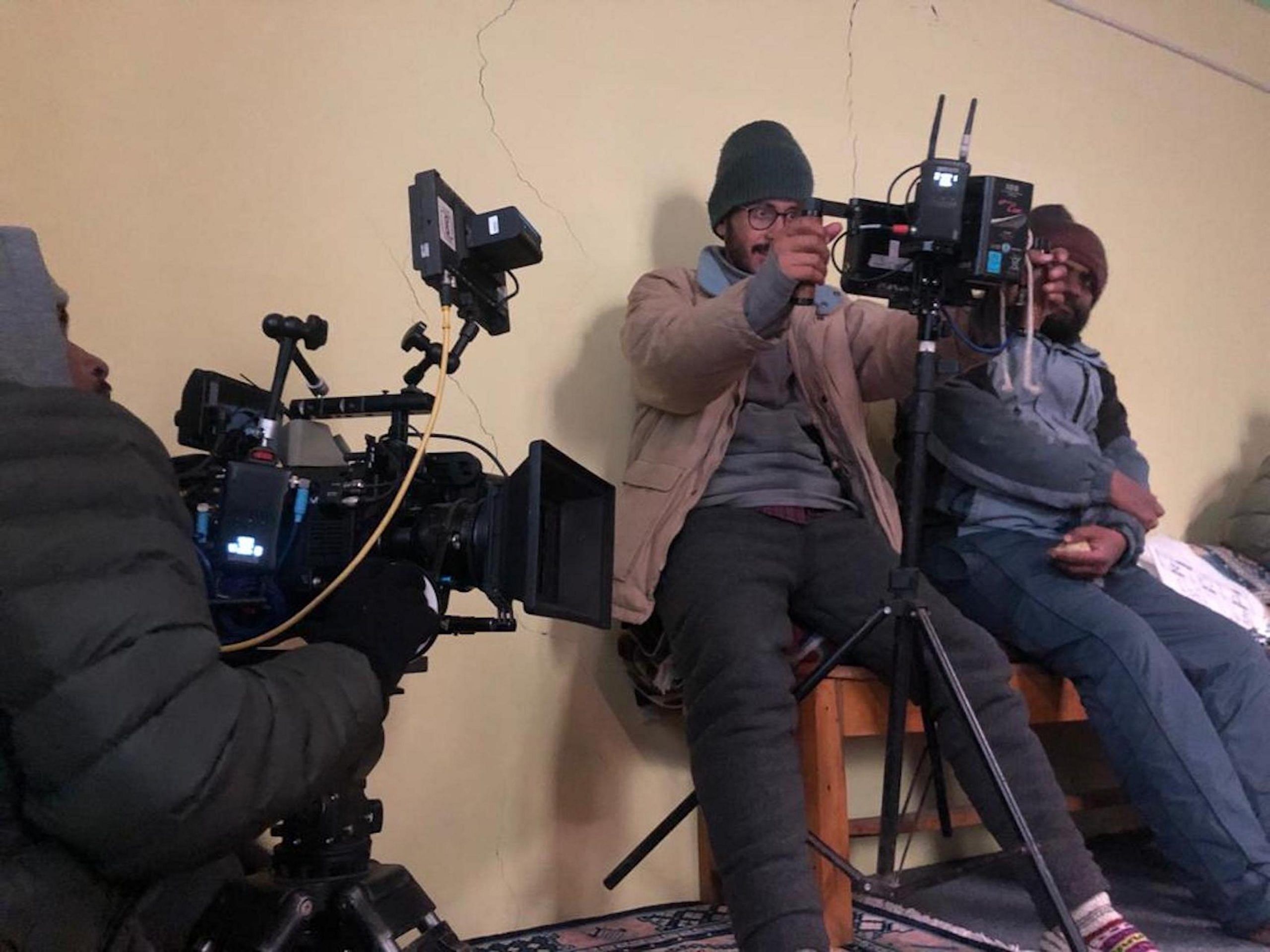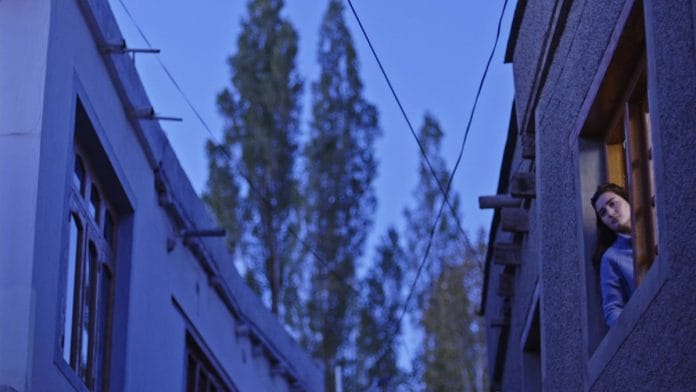There are no snow-capped peaks, green valleys or Buddhist stupas with Tibetan prayer flags fluttering in the blue sky in Maisam Ali’s Ladakh. His debut feature In Retreat, a 75-minute film set in the Himalayan state, is about exile and homecoming.
It does not show the Ladakh popularised in the Aamir Khan-starrer Three Idiots (2009). Instead, the camera focuses on the narrow lanes, local eateries and everyday conflicts within families. It was a deliberate choice.
“Part of the reason why the film is shot at night is because I did not want to show the beauty, and also because it offers anonymity to the protagonist,” said Ali.
It will be screened at the Jio MAMI festival on 22 and 23 October under the non-competitive section of feature and short films by South Asian filmmakers. The six-day event, due to be held between 19 and 24 October, will screen around 110 films from 45+ countries in over 50 languages.
The main character is a nameless man in his 50s (played by Harish Khanna) who returns to Leh for a single night after missing his brother’s funeral. As he wanders around attempting to reconnect with a hometown he hasn’t visited in years, an overwhelming sense of uncertainty takes over him. The audience has to follow the protagonist and invest in his meanderings to understand the state of his mind—and the disconnect he feels with his home.

In Retreat is an exploration of loneliness and alienation.
The man does not want to be the prodigal son, and yet, cannot let go of his desire to reconnect with his now-estranged family. He reaches out to his brother’s grandson on Facebook and tells him that he is coming home bearing a fishing rod as a gift.
The grandson, who is still in school, does not understand the purpose of his granduncle’s visit, nor why he chose to isolate himself from the family. He does not question his return either, simply focusing his attention on the fishing rod he had been promised.
This child, though, brings a sense of safety and comfort to the man. He is the only person in the family who is non-judgemental and in front of whom he can freely express his lingering desire to return home.
The movie serves as a reminder of Ali’s roots, and reflects his vision of home. The filmmaker’s great-grandfather came from a family of Kashmiri traders who eventually settled in Ladakh.
“When I hear stories about them and their travels for trans-Himalayan trade, that landscape where they used to move, eat, shop and even sing, is the kind of fantasy home I want,” said Ali.
That is probably why his protagonist is closer to a flaneur—an observer who walks around doing nothing in particular.
In search of home
Maisam Ali’s own memories of growing up in Iran and Ladakh, and the many ‘homes’ he experienced, shape the plot of the film. The Leh-based director was born in Iran, where his physician-father worked for the public health service before returning to Ladakh in 1995.
At the time, he was eight years old. Like the film’s protagonist, he, too, returned to Ladakh after a hiatus. Having lived in various cities, Ali would question the idea of homecoming. Of what it meant to call one single place home.
“I have a strange relationship with home. We choose to love and live with a certain set of people, and everyone else apart from them is made into ‘others’. I am not comfortable with this idea of home,” he said.

For the film’s protagonist, home is as elusive. He knows he is unwelcome at the house his brother once lived in. Even his interactions in the local language are stilted, weighed down by errors. But he still tries to establish some connection with the people he meets—the owner of a small cafe, a tobacco seller, and a woman who, like him, walked aimlessly after a fight with her husband.
The protagonist understands Ladakhi but speaks Hindi, making it difficult for him to shed the ‘outsider’ tag. He forms temporary connections with people and is always seen as an intruder. For instance, when he is invited to a wedding by some men he had once offered cigarettes to, their relatives chide them for calling a “stranger” to a “family function”.
Also read:
Capturing the essence of Ladakh
What makes Ali’s film stand out is the meticulous sound design–which he spent months doing and redoing.
“In FTII [Film and Television Institute of India], we take a lot of time to learn about sound. But in today’s time, there are loud dialogues and loud music accompanying it,” said Ali.
The background score incorporates the drone and buzz of daily life in Ladakh—from people bickering to a bus puttering on the road.
In a scene where the main character boards a bus, a voiceover reveals the state of his mind – how he wishes for the journey to never end so that he can avoid meeting his estranged family. The soft violin music underscores the sadness of this solitary journey, subtly enhancing the moment without drawing attention to itself.
The camerawork by Ashok Meena is noteworthy, considering how it moves in tandem with the inner workings of the protagonist’s mind.
The viewer is taken through broad roads and narrow alleys as the night slowly unfolds, revealing the man’s conflicting emotions. A stream-of-consciousness voiceover adds depth to these scenes.
“I used to read poetry from various places, from [Mahmud] Darwish to another Russian poet in exile. But this was interesting, and I decided to use the fragment in my film,” said Ali. Darwish’s poem If I were Another on the Road is repeated often in the film, highlighting the main character’s sense of exile.
When the protagonist eats soup at a small hotel, the young shopkeeper asks where he is from. When he replies in broken Ladakhi, she corrects him, and repeats the right words: “I am from here”. But toward the end, he does not seem to think so, choosing to retreat like the film’s title.
This article is part of ThePrint’s monthly series on independent films. Views are personal.
(Edited by Zoya Bhatti)






